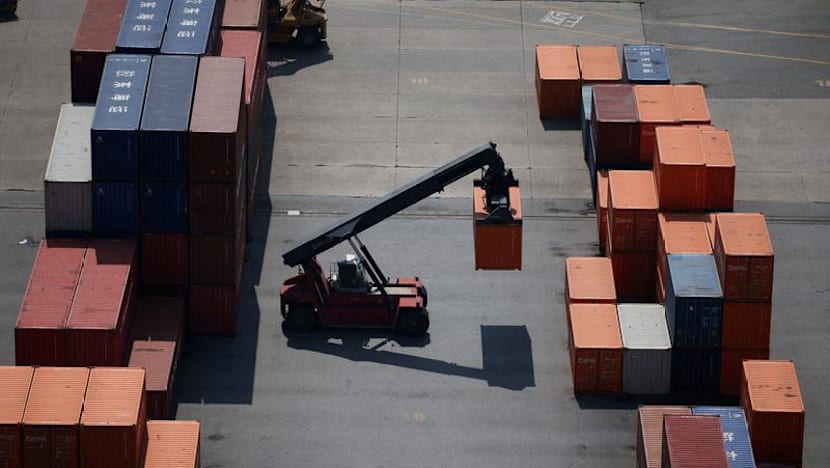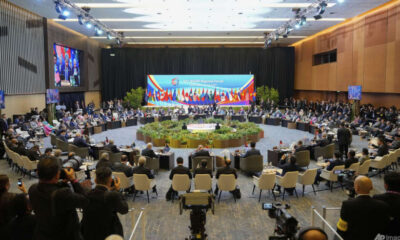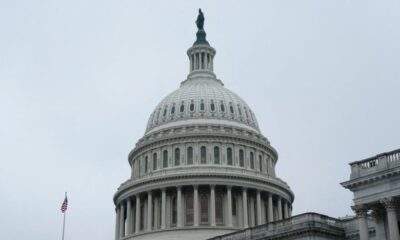Business
ASEAN Navigates New Trade Landscape Amid US Tariff Uncertainty

A US federal court ruled in August that former President Donald Trump lacked the legal authority to impose tariffs under emergency economic powers. As the appeal moves to the US Supreme Court, trade partners, particularly those in the Association of Southeast Asian Nations (ASEAN), are grappling with a rapidly changing trade environment. The critical issue is not solely about the legality of tariffs but how countries can effectively engage in a new US-driven trade paradigm.
Shifts in Trade Dynamics
For over three decades, the global trading system has functioned largely under a multilateral framework, primarily through the World Trade Organization (WTO). Despite its flaws, the WTO provided a stable environment for negotiating trade disputes. Recent developments, however, indicate a shift towards what could be termed “US-laterals,” a departure from traditional multilateral and plurilateral agreements.
The US announcement of “Liberation Day” tariffs on April 2 has set the stage for this new approach. Trade partners are now faced with the urgency of adjusting to these changes, seeking pragmatic solutions rather than retaliatory measures. Countries like Canada and China initially imposed tariffs but have since eased these in response to ongoing negotiations with the US.
The European Union also prepared to implement tariffs but suspended them following a deal with the US. In contrast, ASEAN has taken a clear non-retaliation stance, articulated in a Joint Statement on April 10. Most ASEAN members have successfully negotiated reduced tariffs, paving the way for a more cooperative trade relationship with the US.
Negotiations Over Retaliation
ASEAN countries, including Vietnam, Indonesia, and the Philippines, have engaged in negotiations that secured significant market access for US products. Additionally, commitments to purchase US goods, such as aircraft and agricultural products, have been made. While these developments are promising, the absence of legally binding agreements raises questions about the durability of these deals.
For instance, the agreement between the United Kingdom and the US, reported as the first to be “signed,” lacks the formal binding status typical of Free Trade Agreements (FTAs). This uncertainty leads to speculation about whether current arrangements will evolve into legally binding treaties or remain flexible frameworks subject to change.
Further complicating the landscape, US Treasury Secretary Scott Bessent described reciprocal tariffs as a “melting ice cube,” implying that they could decrease as trade balances improve. However, the specific milestones for tariff reduction remain unclear, leaving ASEAN countries uncertain about the future.
Questions also linger regarding the definitions and implications of “transshipped” goods and the potential for disagreements over their classification. As the US negotiates rules of origin with ASEAN partners, clarity on these issues is critical for both US and ASEAN businesses.
Trade partners also need to consider how tariffs may be adjusted in response to perceived violations of agreements, the inclusion of effective dispute resolution mechanisms, and the nature of purchase commitments. Will these involve government procurement processes or private entities? Further, how will common contractual protections be enforced, and what consequences will arise from non-completion of contracts?
ASEAN’s Commitment to Multilateralism
For supporters of the WTO’s multilateral trading system, there is concern about whether US agreements will comply with the WTO’s Most-Favoured Nation (MFN) rule, which mandates that trade advantages be extended to all WTO members. While these new arrangements may not resemble traditional FTAs, they need not violate WTO rules.
As ASEAN prepares to welcome its 11th member, Timor Leste, in October, the lessons learned from these negotiations will be invaluable. Despite not negotiating as a bloc with the US, ASEAN has the opportunity to enhance its internal economic integration and regulatory environment. This approach could position ASEAN as a significant trade and investment hub, appealing not only to the US but also to other global partners.
In conclusion, as ASEAN navigates this evolving trade landscape, the focus must remain on fostering cooperation while adhering to multilateral agreements. With careful negotiation and strategic planning, ASEAN can thrive amidst the changing dynamics of global trade.
“ASEAN can present itself as a phenomenal trade and investment hub not just to the US, but also to the rest of the world.” – Locknie Hsu, Professor of Law, Singapore Management University
-

 Lifestyle3 months ago
Lifestyle3 months agoHumanism Camp Engages 250 Youths in Summer Fest 2025
-

 Sports3 months ago
Sports3 months agoDe Minaur Triumphs at Washington Open After Thrilling Comeback
-

 Business4 months ago
Business4 months agoKenvue Dismisses CEO Thibaut Mongon as Strategic Review Advances
-

 Sports4 months ago
Sports4 months agoTupou and Daugunu Join First Nations Squad for Lions Clash
-

 Top Stories4 months ago
Top Stories4 months agoColombian Senator Miguel Uribe Shows Signs of Recovery After Attack
-

 World4 months ago
World4 months agoASEAN Gears Up for Historic Joint Meeting of Foreign and Economic Ministers
-

 Business4 months ago
Business4 months agoOil Prices Surge Following New EU Sanctions on Russia
-

 Health3 months ago
Health3 months agoNew Study Challenges Assumptions About Aging and Inflammation
-

 Entertainment3 months ago
Entertainment3 months agoDetaşe-Sabah Violin Ensemble Captivates at Gabala Music Festival
-

 Entertainment3 months ago
Entertainment3 months agoBaku Metro Extends Hours for Justin Timberlake Concert
-

 Business4 months ago
Business4 months agoU.S. House Approves Stablecoin Bill, Sends to Trump for Signature
-

 Top Stories4 months ago
Top Stories4 months agoRethinking Singapore’s F&B Regulations Amid Business Closures









